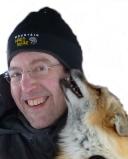Creativity
Mistakes, Innovations, and Animals
How do we study the process of animal innovation in action?
Posted March 19, 2012
I'm fascinated with the process of innovation. Always have been. And I've been studying animal behavior for a long time now, so it may come as no shock that I have married these two interests and become somewhat obsessed with innovation in nonhumans.
As with humans, successful innovation in nonhumans should be rare, with most attempts at developing novel, creative solutions failing. What's more, once a successful innovation is in place in a nonhuman society it should spread quickly, which makes it doubly difficult to study and interpret in nature. This creates a problem for studying innovation in nonhumans. How do we study the process of innovation in action?
Maybe, just maybe, we are thinking about innovation the wrong way. If most attempts to innovate fail, then perhaps we can use these failures as our guide. The best way to understand innovation in nonhumans may be to focus on specific actions that appear to decrease the fitness of individuals. The key question then becomes this: are these "mistakes" really just the waste products of an innovation system that is selected for its average effects, even though it usually fails? We have no idea, but we should find out.
In essence, I'd like to see something like "The Animal Innovation Project" develop some day. To start the process, I propose a survey of the literature on mistakes and their possible link to innovation using powerful search engines like the Web of Science and Cambridge Abstracts and using key words/phrases such as "maladaptive" (and variants of this word), "odd behavior," "innovation," and so on. And because mistakes may underreported—either because researchers are predisposed to ignore it or think it anomalous, or because of biases in the publication process—we need to send out electronic surveys to hundreds of animal behavior researchers working with birds and primates (where most cases of both maladaptive and innovative behavior have been reported).
Systems in which we have information on particular individuals tracked over time will be particularly important, in that these systems will allow us to test one hypothesis that emerges from this "backdoor" approach to studying innovation; namely, that individuals that make lots of mistakes are also more likely to develop innovative behaviors. That is, mistakes are part of the process for developing innovations. What's more in some systems, we should be able to examine whether maladaptive behaviors contain components of what could eventually be an innovative solution to the problem the animal is attempting to solve.
"The Animal Innovation Project"—has a nice ring to it, yes?
====
My latest book is The Prince of Evolution: Peter Kropotkin's Adventures in Science and Politics, only $9.99 (softcover) or $3.99 (Kindle) at Amazon, http://amzn.to/ukbYPd
Speaking engagements: I have had the opportunity to speak about my work on both the evolution of social behavior and the history of science at hundreds of venues, including 70+ universities, The Smithsonian Institute, The American Museum of Natural History, Colonial Williamsburg, Poptech! and The Idea Festival. You can see more about my prior and upcoming speaking engagements at: http://louisville.edu/faculty/laduga01. If you are interested in having me as a speaker, please email me at Lee.Dugatkin@Louisville.edu. I love visiting with interesting groups of people, hearing about their work, and talking about my own research. Unlike a number of my colleagues, I do not charge exorbitant speakers fees.
Image credit: http://bit.ly/yhtVaU by Eric Patterson, tool use in the dolphin.


